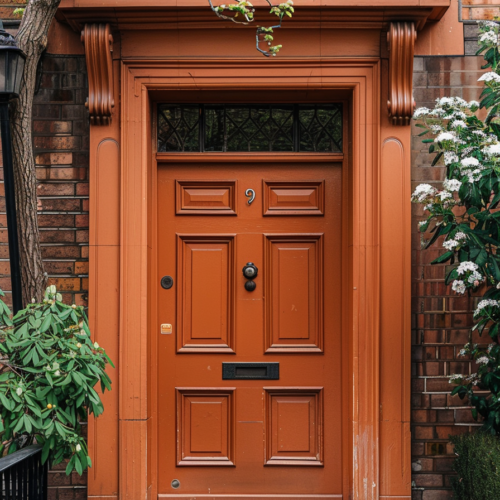- Multiple plants reduce humidity. These include Snake Plants (also known as Mother In Laws Tongue), Peace Lilies, Boston Ferns, Cacti, Orchids, and English Ivy.
- They all do a great job at extracting moisture from the air and are all relatively easy to care for.

If you live somewhere where in the summer months, being indoors without any air-conditioning is unbearable, and you feel like you’re walking through a wall of water, then your indoor environment might be too humid.
A great way to deal with this is to get some plants that can act as natural dehumidifiers by extracting moisture from the air. So, let’s look at some plants that reduce humidity.
These plants act as natural dehumidifiers, and all look great as decorative pieces wherever you decide to put them. Some make beautiful flowers, and even those that don’t will still add great color to any room. So, let’s look at these humidity-reducing plants in more detail.
What Types Of Plants Reduce Humidity?
There is a wide range of plants that reduce humidity. However, they are all characterized by having a sizeable leafy surface area, as this is how most plants extract moisture from the air.
While some, like orchids, do it through their roots, most plants on this list have large leaves to help them extract moisture.
Snake Plants Reduce Humidity
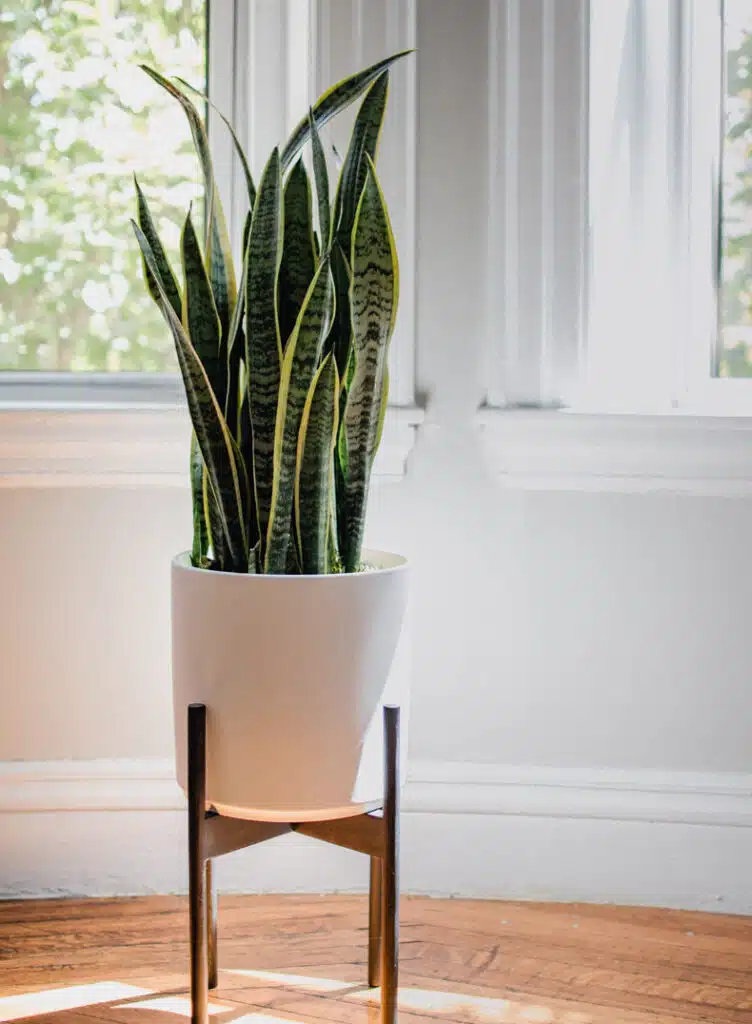
Snake plants, also known as Mother in Laws Tongue, are a common type of house plant that significantly reduces humidity in the air. Snake plants typically grow in clumps in a pot, as they often put out new shoots, meaning they constantly grow.
This makes them a great addition to any room, as they add a great dash of green and have an excellent depth to them.
Snake plants are also straightforward to care for and don’t require much effort. I had one in my lounge in low light conditions and often forgot to give it water for a few weeks.
However, it showed no signs of discomfort and continued to grow very well. Their hardiness, combined with their ability to reduce humidity, make them the perfect house plant.
Growing Snake Plants:
| Lighting Needed | Watering Frequency | Level Of Care Needed |
| Can thrive in various conditions | Medium amount every few weeks | Low (It can go for weeks without water) |
Peace Lilies Reduce Humidity
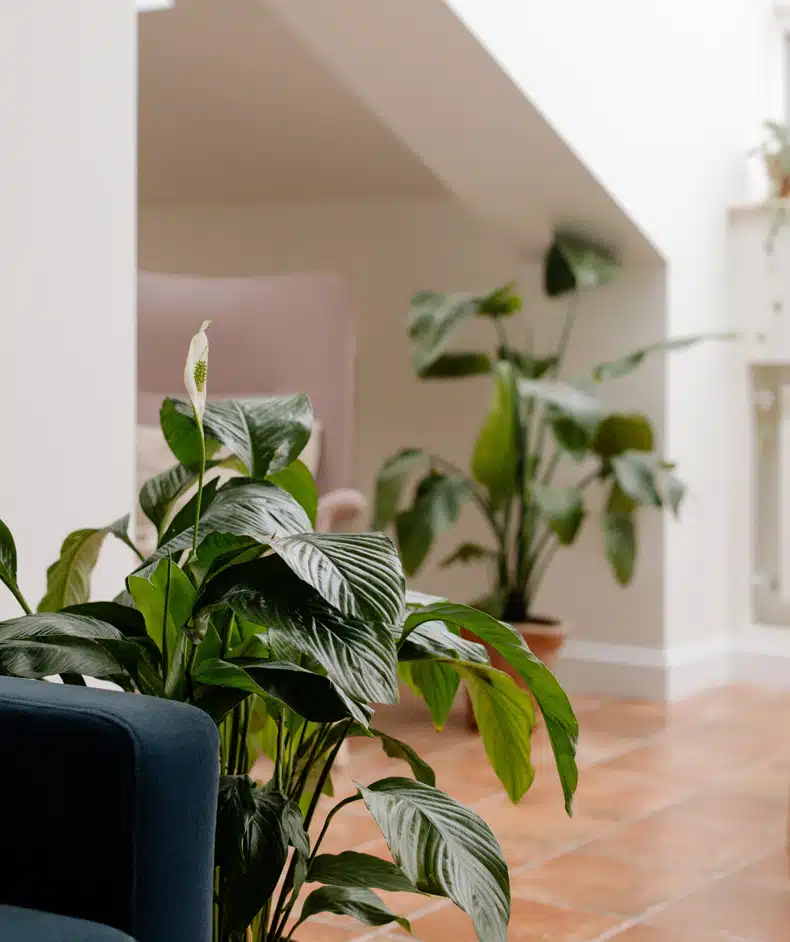
Peace Lilies remove humidity from the air very well. They grow fast and well inside without much effort and constantly create new leaves, making them quite bushy. Their large number of leaves gives them a significant surface area to remove moisture from the air, making them an ideal option for removing humidity.
Peace Lilies also help purify your air by removing contaminants such as formaldehyde and xylene. This ability, combined with their look and elegant white flowers, make them a great addition to any household.
Growing Peace Lilys:
| Lighting Needed | Watering Frequency | Level Of Care Needed |
| Indirect sunlight (Can also be fluorescent lighting) | Weekly (Pour water until it reaches the pot brim) | Medium (You can’t abandon them, but they don’t need constant attention) |
Boston Ferns Reduce Humidity
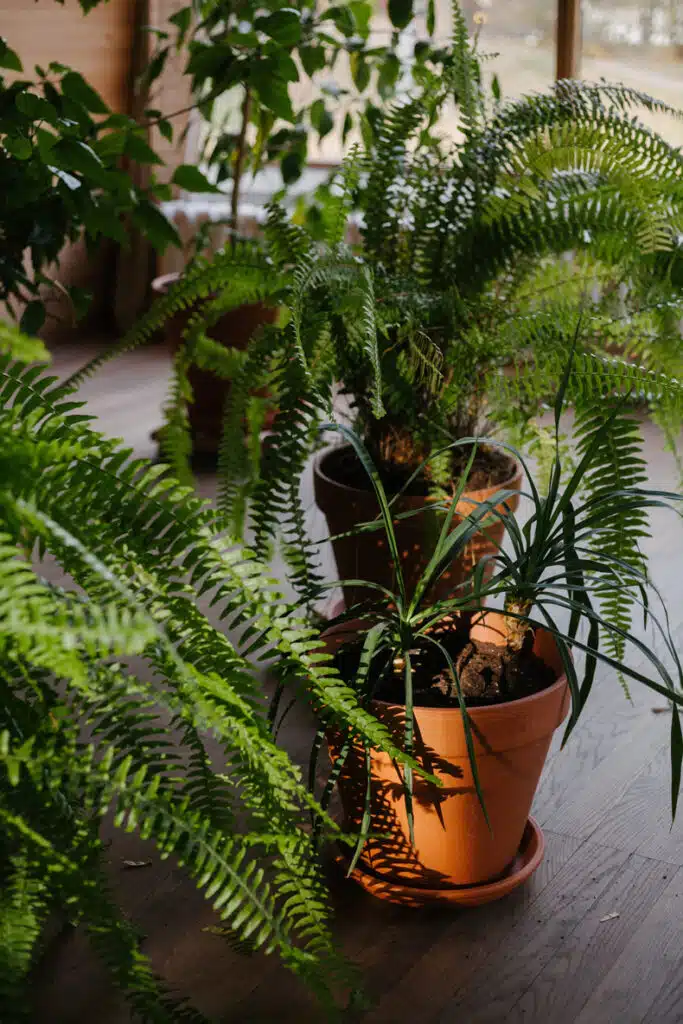
There are many species of ferns, and most of them are great at reducing humidity and are all relatively easy to look after. The most popular fern for reducing humidity is the Boston Fern. It is a common fern you’ve probably seen before and makes an excellent house plant as it thrives in many environments.
On top of reducing humidity, Boston Ferns also helps purify the air by removing air pollutants, like formaldehyde, xylene, and benzene, which can aid people with allergies.
Boston Ferns thrive in humid environments that are relatively warm. If you live somewhere where the air dries out in the colder months, it might be best to mist the plants on the odd occasion so they continue to thrive.
Growing Boston Ferns:
| Lighting Needed | Watering Frequency | Level Of Care Needed |
| Indirect sunlight | Weekly | Medium (They don’t need constant attention, but you can’t abandon them) |
Cacti Reduce Humidity
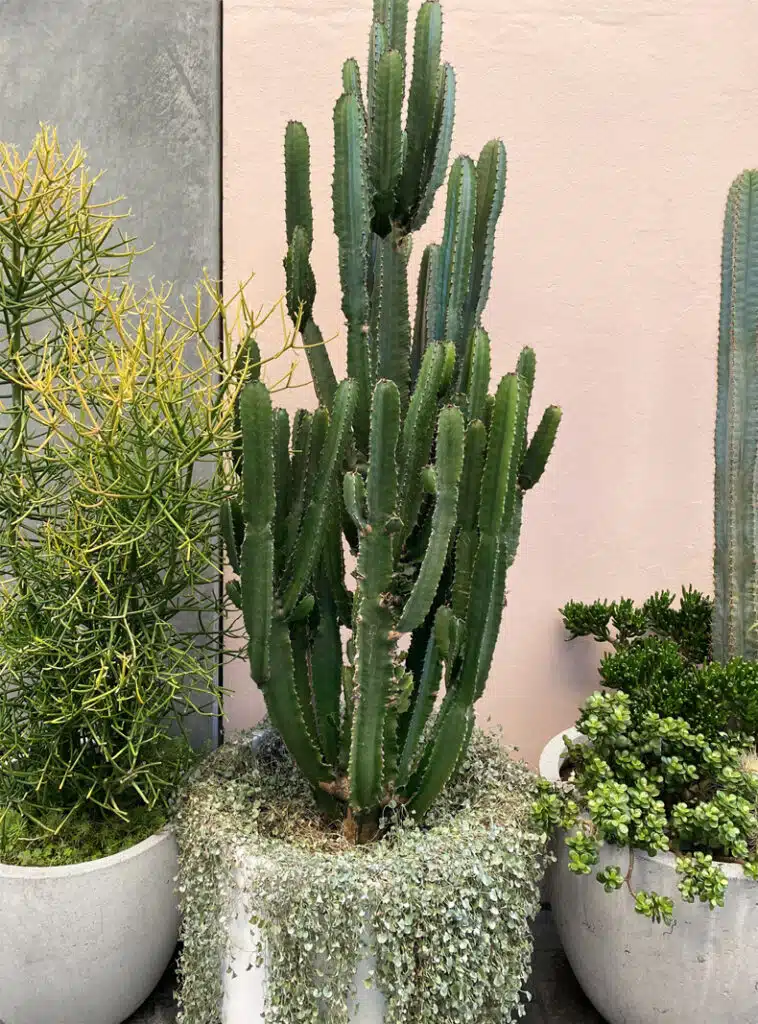
Cacti are very different from other plants on the list, as they typically grow in dry, harsh climates. There are many kinds of cacti, but they are all characterized by their thick, fleshy, juicy leaves and hardiness.
Their ability to thrive in dry climates makes them good dehumidifiers. Due to them naturally growing in areas with infrequent and inconsistent rainfall, they will maximize their usage whenever they have access to moisture (be it in the air or soil). Therefore, they do a good job of reducing humidity indoors and outdoors.
Cacti are also extremely easy to grow, making them the perfect plant for new plant owners or people who travel a lot and can’t spend much time keeping their plants alive. They often produce beautiful little flowers and can thrive without needing much attention paid to them.
Growing Cacti:
| Lighting Needed | Watering Frequency | Level Of Care Needed |
| Cope well in direct sunlight | Small amount every few weeks (Rather underwater, than overwater) | Low (You can abandon them for a few weeks, and they’ll be fine) |
Orchids Reduce Humidity
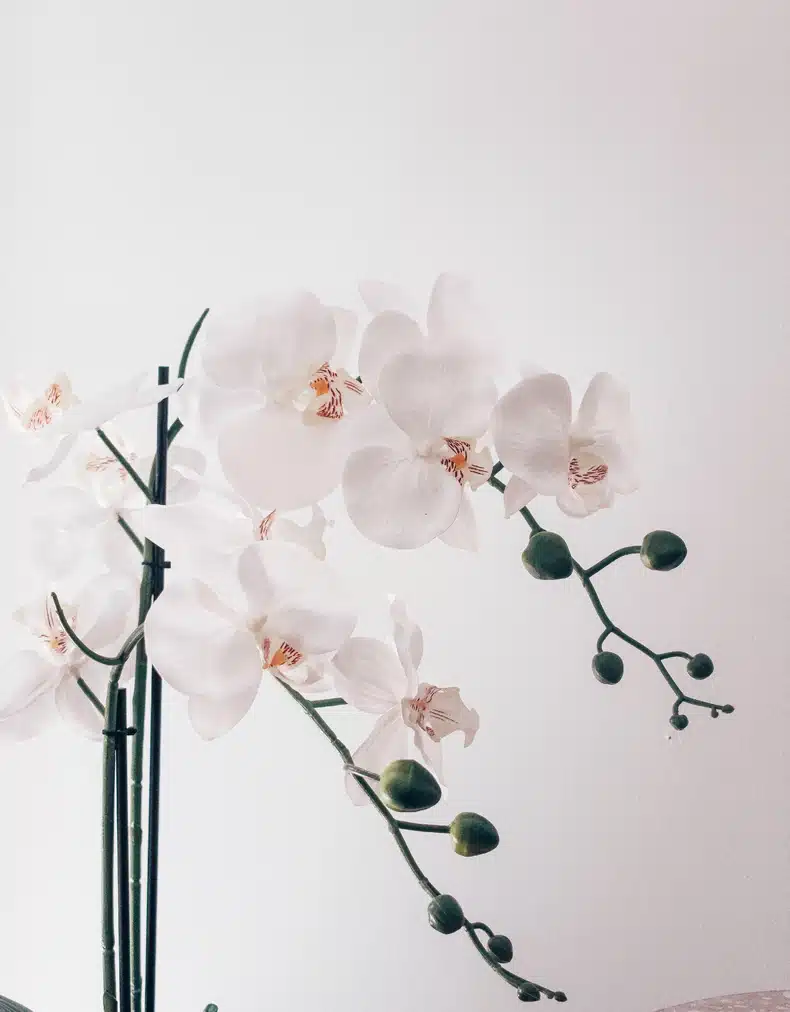
There are many different types of orchids, ranging from ones with flowers just smaller than your fingernail to ones you more commonly see with flowers almost as big as your palm.
The one thing nearly all orchids have in common is that they tend to grow in forests and usually grow on trees. As a result, they have to draw a lot of their moisture from the air because tree bark doesn’t hold water as effectively as soil.
However, orchids are not the easiest plants to take care of, particularly if you want them to thrive, as they require a decent level of attention. This doesn’t mean you should avoid them, but rather that they’re not the best options for people who struggle with plants.
Though, if you get it right, they’ll do a great job reducing humidity and look fantastic in any room, especially when they flower.
Growing Orchids:
| Lighting Needed | Watering Frequency | Level Of Care Needed |
| Indirect sunlight | Weekly (Be careful not to drown them though) | Medium (They need attention, but they won’t die if you look at them funny) |
English Ivy Reduces Humidity
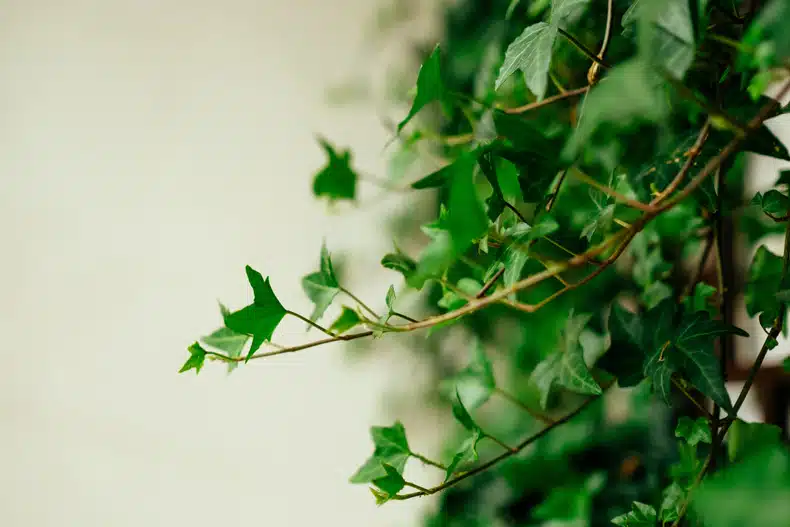
English Ivy is an excellent dehumidifier due to its large number of leaves, giving it a large surface area from which it can extract moisture from the air. Furthermore, English Ivy can decrease the level of airborne fecal matter, making it a great addition to your household if you have pets.
English Ivy is also a very versatile plant in terms of how it can be grown. It is naturally a creeper, meaning you can plant it in outdoor areas like a courtyard or outside the house, and it will thrive.
However, it also works great as a pot plant, particularly if you hang it somewhere, as this allows the different branches to spill over the side of the pot.
Growing English Ivy:
| Lighting Needed | Watering Frequency | Level Of Care Needed |
| Indirect sunlight | Weekly (Pour water until it reaches the pot brim) | Medium (You can’t abandon them, but they don’t need constant attention) |
Conclusion
There are many different plants to choose from if you’re looking for something that will reduce humidity. They all have pros and cons, so it’s best to choose one that suits your needs in terms of the level of care and its aesthetic value. If you select a plant on this list, it will do a great job as a natural dehumidifier.
Follow Quiet Minimal for more minimalist living tips and interior design ideas!


